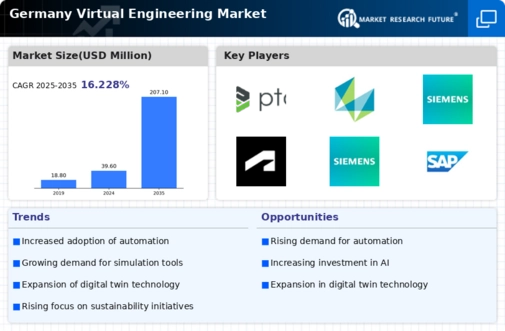The competitive insights of the Germany Virtual Engineering Market reveal a dynamic landscape characterized by rapid technological advancements, stringent regulations, and an increasing focus on digital transformation across industries. A significant shift is occurring as companies leverage virtual engineering solutions to enhance product development while optimizing resources. The integration of advanced tools for simulation, modeling, and data analytics is becoming essential for businesses striving to maintain a competitive edge.
As industries such as automotive, aerospace, and manufacturing heavily invest in virtual engineering, the market is expected to witness substantial growth driven by the demand for innovation and efficiency. PTC has established a strong presence in the Germany Virtual Engineering Market, recognized for its cutting-edge solutions in product lifecycle management and computer-aided design. The company has successfully positioned itself as a leader in providing virtual engineering software that enhances collaboration, reduces time-to-market, and boosts product quality. PTC's strengths lie in its robust technological capabilities and a wide range of offerings that cater specifically to local industry needs. The company's dedication to continuous innovation and its strategically tailored services resonate well with German manufacturers, supporting their shift towards Industry 4.0 initiatives.
Through partnerships and a dedicated local presence, PTC continues to strengthen its market influence and drive customer loyalty within this competitive landscape. Hexagon also plays a significant role in the Germany Virtual Engineering Market, offering a variety of key products and services focused on smart manufacturing and industrial automation. The company's strong portfolio includes solutions for measuring, monitoring, and analyzing data related to manufacturing processes, which streamlines operations for German firms.
Hexagon's strengths in digital transformation align well with the German market's emphasis on precision and efficiency. Recent mergers and acquisitions have further bolstered Hexagon's capabilities, expanding their technological offerings and market reach. By fostering innovation through investment in research and development and adapting to local industry demands, Hexagon remains competitive in providing tailored solutions for German enterprises pursuing advancements in virtual engineering. The company's established reputation and commitment to excellence empower it to maintain a prominent position in this rapidly evolving market.



















